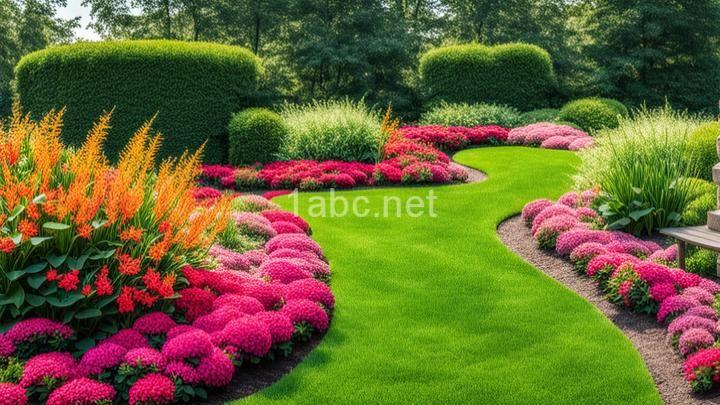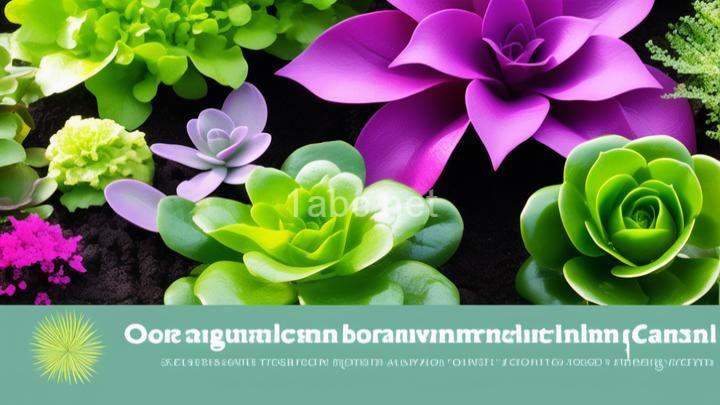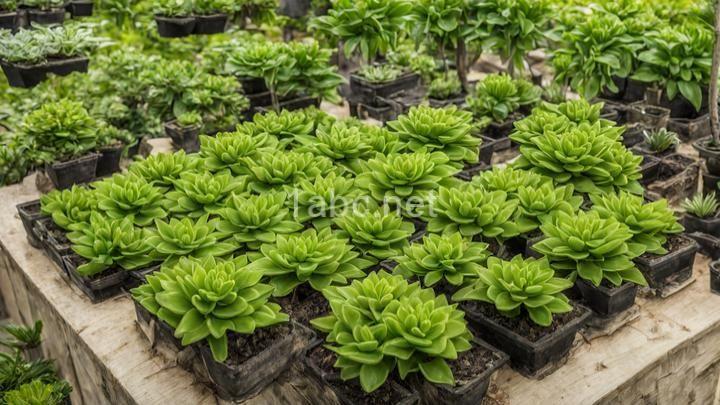Creating Stunning Color Combinations with Ornamental Plants in Your Flowerbed

Introduction:
Welcome to the world of gardening enthusiasts! In this blog post, we are going to explore the exciting realm of creating stunning color combinations with ornamental plants in your flowerbed. Gardening is not just about planting flowers; it's about creating a masterpiece with nature's vibrant palette. So, grab your gardening gloves and let's dive into the world of colors!
Section 1: Understanding Color Theory
To create visually captivating flowerbeds, it's important to understand the basics of color theory. Colors have the power to evoke emotions and set the mood in your garden. Let's start with the primary colors - red, blue, and yellow. These colors are the foundation of all other colors. Mixing them together gives birth to secondary colors like purple, green, and orange. And when you mix the primary and secondary colors, you get tertiary colors, such as red-orange or blue-green.
Different color combinations have the ability to create different moods in your garden. For example, warm colors like red, orange, and yellow evoke feelings of excitement and energy. On the other hand, cool colors like blue, green, and purple create a calming and serene atmosphere. Understanding these color associations will help you design your flowerbed with intention.
Now, let's explore some popular color schemes. Complementary colors are those that sit opposite each other on the color wheel, like purple and yellow or red and green. These combinations create a vibrant and bold contrast. Analogous colors, on the other hand, are neighbors on the color wheel, like blue and purple or orange and yellow. They create a harmonious and soothing effect. Monochromatic color schemes involve using different shades and tints of a single color, creating a sense of unity and elegance.
Section 2: Choosing Ornamental Plants for Your Flowerbed
Ornamental plants are the stars of your flowerbed when it comes to creating stunning color combinations. These plants are known for their vibrant hues and eye-catching foliage. When selecting ornamental plants, consider their color palette and how they will complement each other.
There are numerous types of ornamental plants to choose from, each offering its own unique beauty. Let's explore a few recommendations:
-
Roses (Rosa spp.): Roses are classic ornamental plants that come in a wide range of colors, from vibrant reds to soft pinks and delicate whites. They add elegance and romance to any flowerbed.
-
Geraniums (Pelargonium spp.): Geraniums are known for their bold and vibrant colors, such as deep reds, bright pinks, and vibrant purples. They are perfect for creating a pop of color in your flowerbed.
-
Marigolds (Tagetes spp.): Marigolds come in shades of yellow, orange, and gold, bringing warmth and cheerfulness to your garden. They are also great for repelling pests.
-
Delphiniums (Delphinium spp.): Delphiniums offer a wide range of blue shades, from pale sky blue to deep indigo. They add a touch of elegance and grace to any flowerbed.
-
Coleus (Solenostemon spp.): Coleus plants have stunning foliage that comes in a variety of colors and patterns. They are perfect for adding texture and visual interest to your flowerbed.
Remember to consider the different bloom times of these plants to ensure a continuous display of colors throughout the seasons.
Section 3: Designing Your Flowerbed Layout
Now that you have chosen your ornamental plants, it's time to design your flowerbed layout. Planning is key to create a visually appealing and harmonious space.
Consider the height and growth patterns of your plants when arranging them in your flowerbed. Place taller plants at the back to create a backdrop for the shorter ones. This will ensure that every plant gets its time in the spotlight.
Creating focal points in your flowerbed can add a touch of drama. Choose a plant with a vibrant color or unique shape to draw attention. Balance contrasting colors by placing them strategically throughout your flowerbed. For example, if you have a predominantly purple color scheme, add pops of bright yellow or white to create visual interest.
Section 4: Maintaining Colorful Flowerbeds throughout Seasons
To keep your flowerbed looking stunning year-round, it's important to maintain your plants. Choose ornamental plants with varying blooming periods to ensure a continuous display of colors throughout the seasons.
Regular deadheading, which is the removal of spent flowers, will encourage your plants to produce more blooms. Pruning is also essential to maintain the shape and health of your plants. If you notice overcrowding, consider transplanting some of your plants to ensure they have enough space to thrive.
Proper watering, fertilizing, and pest control are crucial for the health of your ornamental plants. Be sure to water your plants regularly, especially during dry spells, and provide them with the nutrients they need to flourish. Keep an eye out for pests and take necessary measures to protect your plants.
Conclusion:
Creating stunning color combinations with ornamental plants in your flowerbed is both an art and a science. By understanding color theory, choosing the right plants, designing your layout, and maintaining your flowerbed, you can create a visual masterpiece that will bring joy for years to come.
Don't be afraid to experiment with different color schemes and combinations. Gardening is a creative process, and every flowerbed is a reflection of its gardener's personality and style.
We would love to see your colorful creations! Share your flowerbed photos and experiences with us. And remember, if you ever need more gardening inspiration or advice, visit our website for more content tailored to your green thumb.
Thank you for joining us on this colorful journey. Happy gardening! May your flowerbed bloom with vibrant colors!
FREQUENTLY ASKED QUESTIONS
Why should I consider using ornamental plants for color combinations in my flowerbed?
Using ornamental plants for color combinations in your flowerbed can have several benefits. Here are a few reasons why you should consider it:
-
Visual appeal: Ornamental plants offer a wide variety of colors, textures, and shapes, which can enhance the overall visual appeal of your flowerbed. By carefully selecting and combining different plants, you can create stunning color combinations that will catch the eye and add vibrancy to your garden.
-
Seasonal interest: Different ornamental plants bloom at different times of the year, ensuring that your flowerbed remains visually interesting throughout the seasons. By choosing plants with varying bloom times, you can create a dynamic display that changes throughout the year.
-
Contrast and harmony: Using color combinations in your flowerbed allows you to play with contrast and harmony. You can choose complementary colors to create a striking contrast, or opt for analogous colors for a more harmonious and soothing effect. Either way, color combinations can help create a visually pleasing and balanced flowerbed.
-
Focal points: Ornamental plants with vibrant or unique colors can act as focal points in your flowerbed, drawing attention and creating visual interest. By strategically placing these plants, you can guide the viewer's eye and create a sense of depth and dimension in your garden.
-
Personal expression: Using color combinations in your flowerbed allows you to express your creativity and personal style. You can choose colors that reflect your personality or create a specific theme or mood in your garden. Experimenting with different color combinations can be a fun and rewarding way to personalize your outdoor space.
In summary, using ornamental plants for color combinations in your flowerbed can enhance the visual appeal, provide seasonal interest, create contrast and harmony, act as focal points, and allow for personal expression. So go ahead and explore the endless possibilities of color combinations in your garden!
What are some popular ornamental plants that can be used for color combinations?
There are several popular ornamental plants that can be used for color combinations in your garden or landscaping. Here are a few examples:
-
Petunias: These vibrant annual flowers come in various shades of pink, purple, red, and white. They are perfect for adding pops of color to your garden beds or hanging baskets.
-
Marigolds: Marigolds are known for their bright yellow and orange hues. They are easy to grow and can provide a cheerful touch to your outdoor space.
-
Geraniums: Geraniums are versatile plants that offer a wide range of colors, including red, pink, white, and salmon. They are a popular choice for both flower beds and container gardens.
-
Coleus: Coleus plants are prized for their colorful foliage, which can feature combinations of green, purple, pink, and yellow. They add a unique and eye-catching element to any garden.
-
Salvia: Salvia plants come in a variety of colors, including vibrant red, purple, and blue. They are loved for their long-lasting blooms and ability to attract pollinators.
-
Begonias: Begonias are known for their showy flowers, which can be found in shades of pink, red, orange, and white. They are often used in containers, hanging baskets, or as bedding plants.
Remember to consider the growing conditions of your garden, such as sunlight and soil type, when selecting ornamental plants for color combinations. These are just a few popular options, but there are many more to explore based on your personal preferences and the overall aesthetic you want to achieve.
How do I select the right color combinations for my flowerbed?
Selecting the right color combinations for your flowerbed can greatly enhance its visual appeal. Here are some tips to help you choose the perfect colors:
-
Consider the surroundings: Take into account the colors of your house, fences, or any other elements near the flowerbed. Harmonizing the colors will create a cohesive and pleasing look.
-
Choose a focal point: Decide on a main color or theme that will stand out in your flowerbed. This can be a single color or a combination of colors that will draw attention and serve as the centerpiece.
-
Use the color wheel: Familiarize yourself with the color wheel to understand how different colors work together. Complementary colors, which are opposite each other on the wheel, create a striking contrast. Analogous colors, which are next to each other, provide a more harmonious and calming effect.
-
Consider the season: Think about the time of year when your flowerbed will be in full bloom. Spring and summer often call for vibrant and bold colors, while fall may lend itself to warmer tones.
-
Think about plant characteristics: Take into account the color of the flowers, leaves, and stems of the plants you plan to include in your flowerbed. Consider how these colors will complement or contrast with each other.
-
Experiment and have fun: Don't be afraid to mix and match different colors to find the combination that speaks to you. Gardening is an art form, so let your creativity flow!
Remember, there are no hard and fast rules when it comes to color combinations for your flowerbed. Personal preference and experimentation play a big role in finding the right balance. So go ahead and enjoy the process of creating a beautiful, colorful oasis in your garden!
Are there any specific techniques for arranging ornamental plants to create stunning color combinations?
Yes, there are specific techniques for arranging ornamental plants to create stunning color combinations. One technique is to use the color wheel as a guide. The color wheel can help you identify complementary colors, which are colors that are opposite each other on the wheel. For example, purple and yellow are complementary colors. By placing plants with these colors next to each other, you can create a vibrant and eye-catching display.Another technique is to use color harmonies. Color harmonies are combinations of colors that are aesthetically pleasing. Some common color harmonies include analogous colors (colors that are next to each other on the color wheel), monochromatic colors (different shades of the same color), and triadic colors (three colors that are equally spaced on the color wheel).
In addition to color, consider the size and shape of the plants. Varying the heights and textures of the plants can add visual interest to your arrangement. For example, you can place tall, spiky plants next to low, rounded plants for a dynamic contrast.
Don't forget about foliage! Mixing plants with different leaf colors and textures can also create stunning combinations. For example, combining plants with variegated leaves (leaves with different colors or patterns) with plants that have solid green leaves can create a striking contrast.
Lastly, consider the seasonality of the plants. Some plants bloom at different times of the year, so you can create ever-changing color combinations by selecting plants that bloom at different times. This can add depth and variety to your arrangement.
Overall, arranging ornamental plants to create stunning color combinations involves considering the color wheel, using color harmonies, varying plant sizes and shapes, incorporating foliage, and taking into account the seasonality of the plants. By following these techniques, you can create a visually pleasing and captivating display of colors in your garden or outdoor space.


